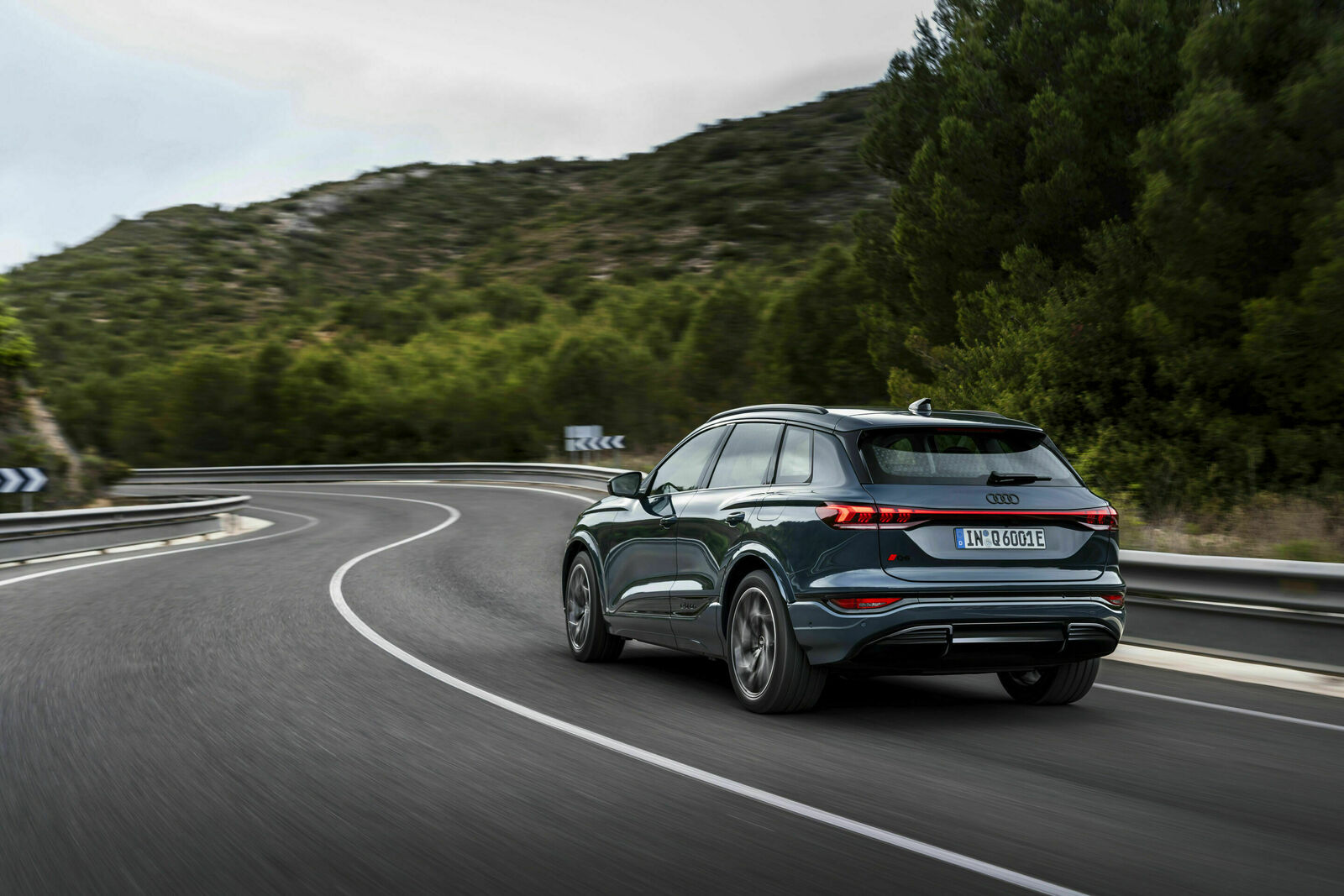“As expected, 2024 will be a year of transition for us,” said Audi CFO Jürgen Rittersberger. “This can especially be seen in the first quarter, which was characterized by a strained supply situation, among other things. Moreover, model initiatives like the one Audi is currently launching are always associated with high preliminary expenditures in the beginning. However, we’re pursuing a clear plan and have implemented a multitude of measures through our Performance Program 14 that will take effect over the course of the year and help us achieve our financial goals for this year.” Part of Performance Program 14 involves strengthening product line organization, optimizing the global production network and increasing flexibility in production. Audi is reducing complexity – without sacrificing quality or customer-related attributes.
“We’re continuing to pick up the pace with our product offensive,” said Gernot Döllner, CEO of AUDI AG. “Following the world debut of the Audi Q6 e-tron and the Audi Q6L e-tron, which was just introduced in Beijing and was developed specifically for the Chinese market, the next fully electric model will follow this summer in the form of the A6 e-tron. With the new generation of the A5 and Q5, we’ll also be launching our first models based on the Premium Platform Combustion (PPC) in the second half of the year. This transition will be demanding for us. With our strong team, highly attractive new models and a clear agenda for more speed, we’re positioning ourselves for the future. We’re shaping the transformation from a position of strength.”
Deliveries to customers
In the first quarter of the year, Audi, Bentley and Lamborghini delivered 402,048 vehicles for the Brand Group Progressive1 (Q1 2023: 421,824). The decline of 4.7 percent year on year was mainly caused by a difficult market and supply situation. On top of that were 12,394 motorcycles from the Ducati brand (Q1 2023: 14,769). The Audi brand handed over 396,912 vehicles to customers (Q1 2023: 415,684). Deliveries of fully electric models increased by 3 percent to 35,630 vehicles (Q1 2023: 34,584).
Overview of regions
In Europe, the Audi brand delivered 162,432 vehicles in the first quarter (Q1 2023: 181,001). The decline of around 10 percent was mainly caused by the intense competitive situation in Europe, the difficult supply situation and a strike in Mexico. After all, the Audi Q5 is also produced for the European market at the Mexican plant. Deliveries of fully electric vehicles were around 9 percent lower than the same period last year. In Germany, customers’ reluctance showed following the elimination of the environmental bonus. After a strong end to 2023, deliveries in Germany fell to 46,237 vehicles in the first quarter, including 5,434 fully electric models.
In the USA, the Audi brand was able to significantly increase deliveries of fully electric vehicles by around 29 percent to 5,714 models in the first quarter. However, overall deliveries fell to 44,226 vehicles also due to the strike in Mexico. Audi intends to continue to increase its profitability in the USA, as well as its share of delivered electric vehicles.
In China, the Audi brand registered an increase in deliveries in the first quarter. A total of 155,330 (Q1 2023: 136,416) vehicles were handed over to customers, corresponding to an increase of around 14 percent. Demand for fully electric models increased as well. Audi delivered 4,970 electric models – growth of around 54 percent. The next milestone in China is the new Audi Q6L e-tron. Audi tailored the Q6L e-tron specifically to the Chinese market, with its extended wheelbase, longer range and striking design details. On top of that, the Q6L e-tron is the first model based on the new Premium Platform Electric (PPE) to be produced locally – in China, for China – at the new plant in Changchun.
Revenue
The Audi Group’s revenue decreased by 18.7 percent to €13,725 (Q1 2023: 16,883) million from January to March. The main causes of this were declining sales, logistics delays and the difficult supply situation with effects on the model and country mix. The share of EU taxonomy-aligned revenue was 14.9 (2023: 14.5) percent.
Operating profit and operating margin
The Audi Group’s operating profit sank to €466 (Q1 2023: 1,816) million. This was mainly due to the challenging market situation and limited availability of certain models, including vehicles with V6 and V8 engines and the strike-related Audi Q5. The operating margin consequently fell to 3.4 (Q1 2023: 10.8) percent.
Brands’ performance
Bentley, Lamborghini and Ducati all contributed to earnings in the first quarter with solid operating margins.
Bentley delivered 2,506 luxury models (Q1 2023: 3,517), a decline of 28.7 percent. Revenue accordingly decreased to €688 (Q1 2023: 882) million. Operating profit reached €120 (Q1 2023: 216) million, while the operating margin remained at a respectable 17.4 (Q1 2023: 24.4) percent.
With 2,630 vehicles delivered (Q1 2023: 2,623), Lamborghini once again slightly exceeded the previous year’s high level. At €691 (Q1 2023: 728) million, revenue was at nearly the same level as the previous year. The Italian brand achieved operating profit of €187 (Q1 2023: 260) million with a still very strong operating margin of 27.0 (Q1 2023: 35.7) percent.
With 12,394 motorcycles delivered (Q1 2023: 14,796), Ducati remained 16.2 percent under last year’s high level, with revenue falling to €262 (Q1 2023: 323) million. Operating profit consequently fell to €27 (Q1 2023: 58) million, while the operating margin reached 10.5 percent in comparison with 17.8 percent in the same period last year.
Financial result and profit after tax
The Audi Group’s financial result in the first quarter of 2024 slightly decreased year on year to €515 (Q1 2023: 544) million. The included Group business in the Chinese market amounted to €179 (Q1 2023: 226) million. In terms of profit after tax, the Audi Group achieved €736 (Q1 2023: 1,767) million at the end of the first quarter.
Net cash flow
Due to the decline in earnings and negative effects from the development of working capital, net cash flow fell to €-768 (Q1 2023: 1,710) million. Net cash flow was also burdened by investments in new fully electric models based on the PPE and in the new platform for combustion-powered models (PPC).
Forecast for 2024
Despite the challenges in the first three months of the year, the Audi Group has confirmed its financial goals for 2024. The company expects improved financial performance over the course of the year – especially because of the gradually improved availability of models with V6 and V8 engines. The company also expects positive effects from the market launches of more models in the second half of the year. Audi will rejuvenate and bolster its model portfolio with more than 20 new models over the next two years. Performance Program 14 will give Audi additional tailwind as well. The company continues to expect revenue of €63 to €68 billion for 2024. The operating margin is expected to lie in the corridor between 8 and 10 percent, while net cash flow is expected to be between €2.5 and €3.5 billion.
Further information can be found here: Quarterly Update and Fact Pack for Q1.
Selected Audi Group key figures at a glance
January - March 2024 | January - March 2023 | |
Brand group deliveries | 402,048 | 421,824 |
Revenue in EUR million | 13,725 | 16,883 |
Operating profit in EUR million | 466 | 1,816 |
Operating margin in percent | 3.4 | 10.8 |
Net cash flow in EUR million | -768 | 1,710 |
Financial result in EUR million | 515 | 544 |
Profit after tax in EUR million | 736 | 1,767 |
Audi brand deliveries to customers
| January-March 2024 | January-March 2023 | Diff. vs. 2023 | |
Global | 396,912 | 415,684 | -4.5% |
Europe | 162,432 | 181,001 | -10.3% |
- Germany | 46,237 | 60,811 | -24.0% |
- United Kingdom | 32,505 | 32,636 | -0.4% |
- France | 10,788 | 11,859 | -9.0% |
- Italy | 18,797 | 16,915 | +11.1% |
- Spain | 9,063 | 9,836 | -7.9% |
USA | 44,226 | 52,763 | -16.2% |
Mexico | 2,745 | 3,204 | -14.3% |
Brazil | 1,317 | 1,363 | -3.4% |
Mainland China and Hong Kong | 155,330 | 136,416 | +13.9% |
2 The Brand Group Progressive describes the Audi Group with the Audi, Bentley, Lamborghini and Ducati brands. The terms “Audi Group”, “Brand Group Progressive” and “brand group” are used synonymously here.






